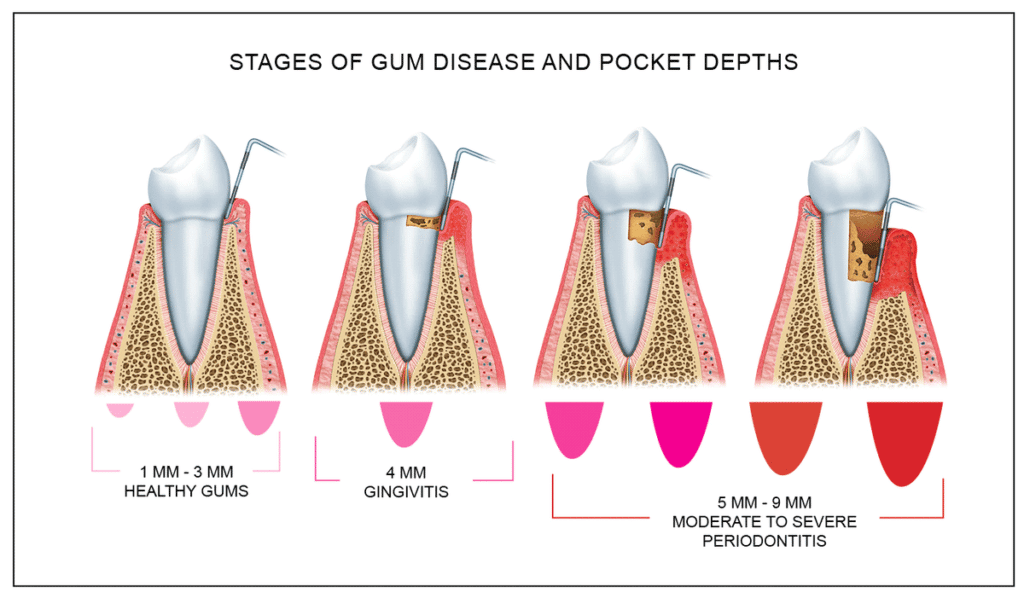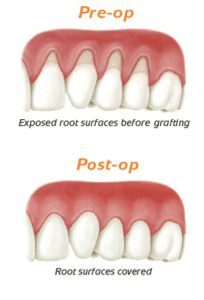
Worried about your Dental Hygiene?
It’s ok we got you covered. Check out these Symptoms
Some of us are often suffering from painful or bleeding gums, bad breath, and lack of cleanliness after brushing teeth. Do not ignore it, because this is one of the first symptoms that your oral hygiene is not good. Soft and hard plaque on the teeth allows bacteria to multiply. This might lead to periodontal diseases, decay, gum inflammation.
Our Dental hygienist will thoroughly clean all deposits and stains from your teeth using special dental instruments and ultrasound machine, teeth surfaces will be polished and smoothing. After the procedure of oral hygiene gum inflammation disappears, mouth breath improves, teeth become clean and smooth. You can start smiling again.
Let us help you to take care of your dental hygiene needs.
Management of gum disease
Consultation and treatment planning
Firstly, all necessary baseline information is collected, and an examination is performed. During the examination a special instrument called a periodontal probe is used to measure the sulcus or pocket depths around teeth. In general, the deeper the pockets, the greater the spread of periodontal disease.

In order to better establish severity of the disease, bleeding on probing, plaque accumulation and tooth motility are assessed individually for each tooth. Clinical findings are compared with radiological examination (panoramic X-ray) and a treatment plan is suggested. Whenever possible, various treatment options are presented.
By the end of the consultation you should feel fully informed about your condition and appropriate treatment options, as well as the likelihood of success.

Non-surgical periodontal therapy
Scaling and Root Planing (SRP) is a careful cleaning of root surfaces in order to mechanically remove plaque and calculus from deep pockets and to smooth the root surfaces which prevents further build-up of calculus. This cleaning is more in-depth than a routine cleaning and may require more than one appointment. For your comfort, a local anaesthetic may be used to numb the area prior to the treatment. Research has consistently demonstrated that SRP reduces gum inflammation and pocket depths, and shifts the bacteria composition living in these pockets from one associated with disease toward one associated with health. Therefore, SRP is usually the first mode of treatment recommended for most patients. After SRP and oral hygiene instructions many patients do not require any further active treatment.
Re-evaluation
Periodontal re-evaluation is performed 6 to 8 weeks after the initial treatment has been completed. At this stage gums are examined again in order to determine whether the treatment was successful in reducing pocket depths and eliminating inflammation. If the treatment proves to be successful, only maintenance visits are required in order to keep the achieved result. However, if the treatment is considered unsuccessful, a repeated non-surgical periodontal therapy or a surgical treatment might be required depending on individual case.
Surgical therapy
There are situations where non-surgical treatment may not resolve more advanced levels of periodontitis. Periodontal surgery can facilitate access to remove plaque and calculus that is located deep under the gum and also provide the opportunity to reshape the gum and bone in order to minimise or eliminate pocketing. There are many surgical approaches used in treatment and the most suitable approach is selected for each patient individually.
Flap surgery. During this procedure a local anaesthetic is used. The gum tissue is folded back to expose deeper areas of infected tissues. Irregular surfaces of the damaged bone may need to be smoothed in order to expose otherwise hidden areas of bacteria. Then, these disease-causing bacteria are removed. Gum tissue is then closed and sutured in place.
Periodontal regenerative surgery. Where bone loss associated with periodontal disease is vertical in nature, there may be an opportunity to regenerate both the lost bone and periodontal attachment. Membranes, bone grafts or tissue-stimulating proteins are used to encourage body’s natural ability to regenerate bone and tissue and reverse some of the damage of gum disease. Although, regenerative techniques require careful site selection, the results can be dramatic.

Maintenance
Once periodontal treatment has been completed, regular check-ups are required. During these check-ups detailed examination and cleanings are performed. In order to prevent re-population of disease-causing microorganisms, cleanings should be performed every 3 to 6 months depending on severity of periodontal disease.
In addition to periodontal cleaning and evaluation, appointment also includes:
- oral cancer screening: head and neck examination (face, neck, lips, tongue, throat, cheek tissues and gums) for any signs of cancer;
- examination of tooth decay;
- examination of existing restorations (fillings, crowns, bridges etc.);
- teeth polishing: plaque and staining removal that is not otherwise removed during tooth brushing and scaling;
- oral hygiene instructions and recommendations.
Periodontal Plastic Surgery Procedures
Gummy Smile or Uneven Gum Line
An excessive display of gum tissue in upper jaw can result from abnormal eruption of teeth. Teeth covered by excessive gum tissue appear shorter, even though they may actually be the proper length. To correct it dental crown lengthening procedure might be performed. During this procedure excess gum and bone tissue is reshaped to expose more of the crown of the tooth. This can be done to one or several teeth resulting in a wider, more beautiful smile.
Dental crown lengthening procedure might also be performed in order to make a restorative or cosmetic dental procedure possible. In case of insufficient tooth structure for restoration resulting from tooth decay or fracture below the gum line, crown lengthening might be applied. Procedure adjusts the gum and bone level to expose more of the tooth so it can be restored.
 BEFORE
BEFORE
 AFTER
AFTER
Gum Graft Surgery
Exposed tooth roots are the result of gum recession. Gum graft surgery repairs the defect and helps to prevent additional recession and bone loss. During gum graft surgery gum tissue is taken from palate or another donor source to cover the exposed root. This can be done to one tooth or several teeth or even a gum line.

Other periodontal procedures
Hemisection
This procedure involves removal of one-half of a tooth. The remaining half is restored as a one-rooted tooth and is usually attached to an adjacent tooth for additional support and stability.
Root Amputation
Root amputation refers to removal of one root in a multi-rooted tooth. This procedures is considered when there is a persistent endodontic failure in only one root of a tooth which must be kept, or if there is a significant bone loss around an individual root due to periodontal disease.

Teeth splinting
Splinting is a technique used to stabilize teeth which became loose as a result of bone loss. Frequently condition is complicated by heavy bite stress. Mobile teeth a stabilized using fiber-reinforced ribbon which is usually bonded to the lingual surfaces of the teeth like a fixed orthodontic retainer.


